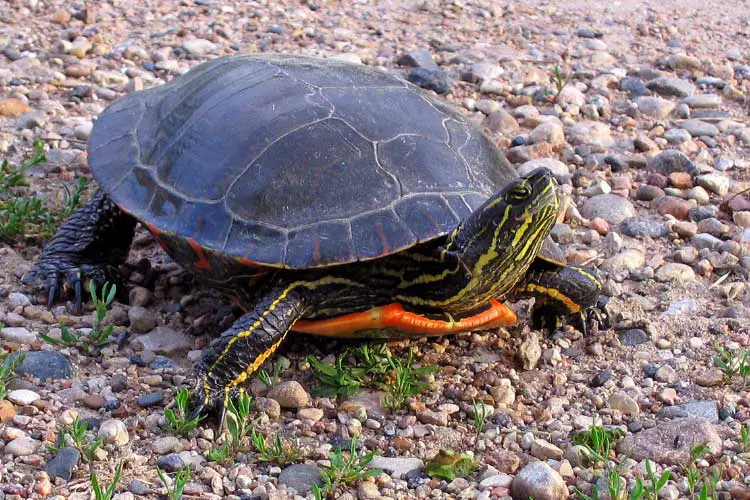Painted Turtle Habitat: How to Setup an Indoor Enclosure?
If you’re planning on getting a painted turtle, then you must first learn how to can come up with a perfect habitat where your new friend can live a healthy and happy life.
The best painted turtle habitat should provide your turtle with the appropriate size of tank size, a strong filter, a basking area, UVB lighting, and a water heater to maintain proper temperature. Adding substrate and turtle tank décor will help make your pet habitat interesting.
Below, we’ll go into full details about you should step up an ideal indoor enclosure for your painted turtle, all the essentials you need, and other tips to consider for the most satisfying turtle habitat.
Things you need for a painted turtle habitat setup:
Contents
Here’s a list of the key essentials you’ll need when setting up a basic indoor turtle enclosure for your painted turtle:
- Turtle tank/enclosure
- Water filter
- Water heater
- UVA & UVB light
- Basking spot
- Substrate (optional)
- Accessories (optional)
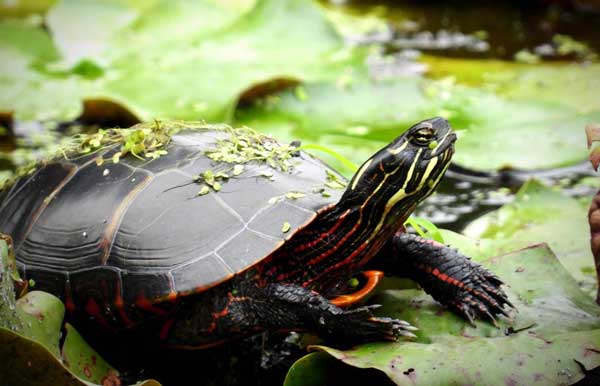
How to set up an indoor painted turtle tank:
Below, we discuss the key steps to follow to help you come up with a basic setup for your painted turtle indoor enclosure.
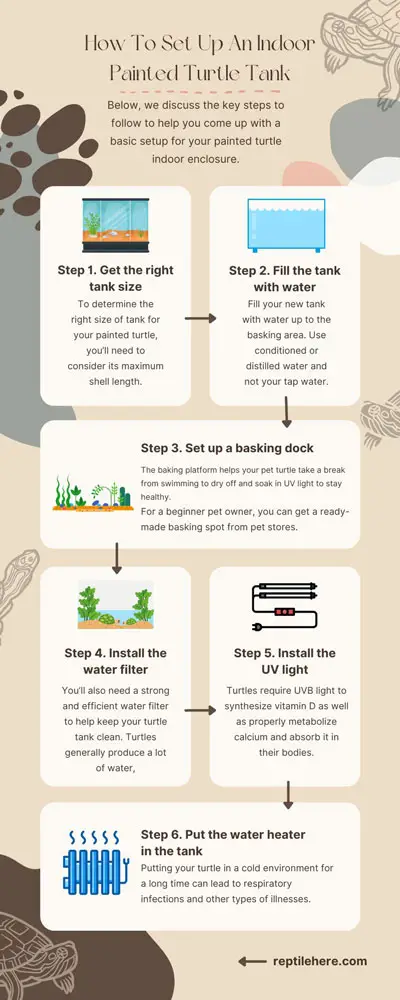
Step 1. Get the right tank size
To determine the right size of tank for your painted turtle, you’ll need to consider its maximum shell length. Then, use the rule of thumb that states for every 1 inch of shell length, you should provide 10 gallons of water.
However, bigger is always better when it comes to turtle tanks. If you don’t have the time to measure your turtle’s shell length, simply get a 75-gallon tank—this will work for any species of painted turtle you have. Or if you have two pet turtles, try a 100-gallon tank.
Step 2. Fill the tank with water
Fill your new tank with water up to the basking area. Use conditioned or distilled water and not your tap water. Make sure the water depth is about twice the width of your pet turtle’s length.
Adult turtles like swimming a lot, so the water depth for their tanks ought to be a bit high.
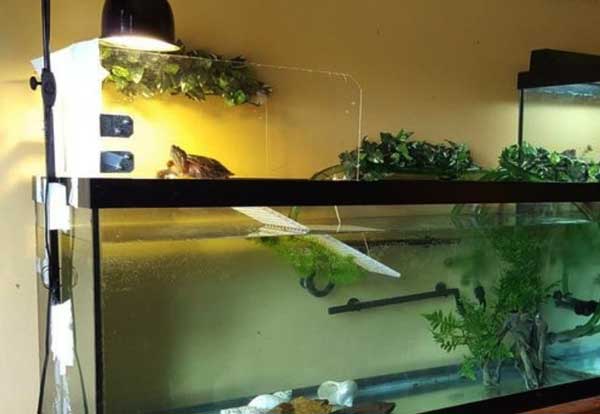
Step 3. Set up a basking dock
The baking platform helps your pet turtle take a break from swimming to dry off and soak in UV light to stay healthy.
For a beginner pet owner, you can get a ready-made basking spot from pet stores. Otherwise, you can easily come up with a homemade turtle basking dock.
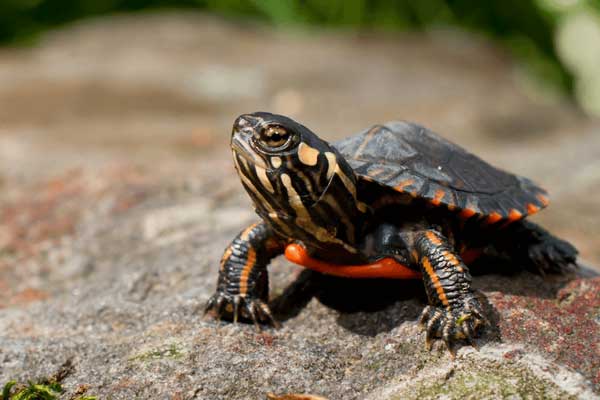
This is pretty easy to make and doesn’t require any special skills. For instance, you can get driftwood that fits in your enclosure and offers sufficient space for your turtle to bask on, and then use wire to hold it up in your enclosure.
Step 4. Install the water filter
You’ll also need a strong and efficient water filter to help keep your turtle tank clean. Turtles generally produce a lot of water, which means they can easily put a strain on your filter.
To counter this, you’ll need to get a stronger filter, such as a canister filter. This filter is pretty large and sits outside, unlike the standard internal filters.
Hooking it up to your tank and cleaning it can be challenging. Nonetheless, it does a good job of keeping your turtle’s enclosure clean and ensuring healthy water for your pet turtle.
Step 5. Install the UV light
Turtles require UVB light to synthesize vitamin D as well as properly metabolize calcium and absorb it in their bodies.
They also need UVA light for mood regulation, metabolism, and improved breeding.
That said, you should get a UV light that produced both UVA and UVB rays of light as both are crucial for your pet’s health.
Step 6. Put the water heater in the tank
Putting your turtle in a cold environment for a long time can lead to respiratory infections and other types of illnesses.
For this reason, it’s important to have a water heater in your turtle tank to maintain the ideal water temperature (70 to 85 degrees F).
This will help keep away potential illnesses—especially during the cold winter months.
Accessories for turtle tank to consider
The above steps will help you come up with a basic painted turtle habitat. However, if your budget allows, you can go ahead and add some extra accessories to your turtle tank to make it look more natural and appealing.
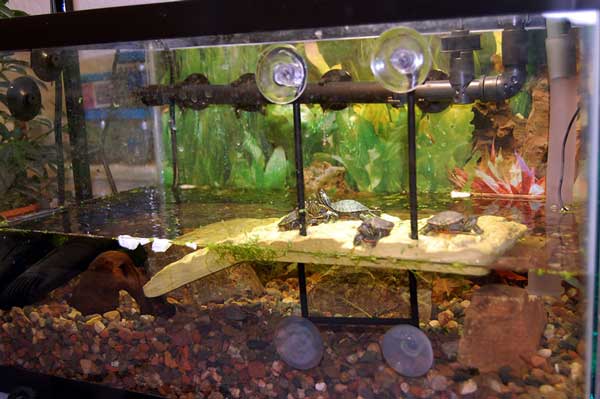
For instance, you can introduce hiding spots under the water, but make sure they don’t trap your turtle. Also, you can add non-toxic aquatic plants to act as hiding spots as well as beautify your turtle habitat.
Adding substrate to your turtle habitat helps improves the tank’s aesthetics. Be sure to choose a substrate that doesn’t easily dissolve or float in the water.
How to introduce your painted turtle into its new tank?
With the tank set up and ready for use, you can now go ahead and put your pet turtle in its new home. However, you should do this gently and calmly to avoid causing the turtle unnecessary stress.
Gently lift your turtle from its old tank or aquarium and carefully lower it into its new enclosure. Be sure to hold it by the shell sides. Avoid the mistake many turtle owners make by lifting their pets by the limbs or head.
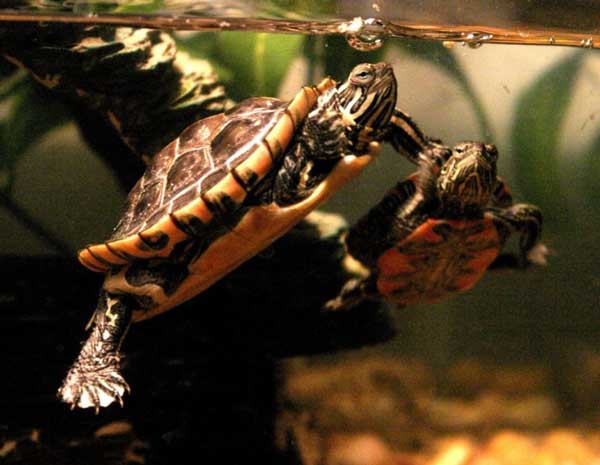
When your turtle is finally inside its new enclosure, you’ll want to give it time and space to get familiar with its new environment.
Turtles don’t like being handled, so you should avoid handling them, otherwise, they may panic and get stressed easily, especially when they’re in a new environment.
How do you set up a tank for a baby painted turtle?
The steps we outlined for setting up an indoor enclosure for adult painted turtle is the same for baby painted turtles Baby turtles generally live in the exact same environment as their adult relatives in the wild.
However, we noted that some people recommend getting a small tank for your baby painted turtle and then upgrading to a bigger tank as your pet grows. In our opinion, this is not a good decision financially.
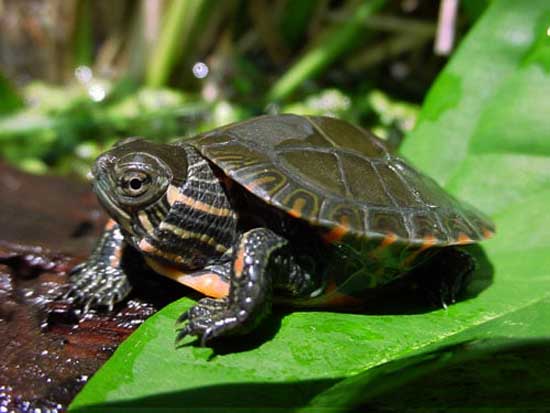
Just get the biggest turtle enclosure you can for your baby turtle so that you don’t have to go back to spend more money on a new tank when your pet outgrows its small tank.
What should I put in my painted turtle tank?
The most important things to put in your painted turtle tank include a strong water filter to keep the water clean, UV light, an underwater heater to maintain optional temperatures, and a basking platform for your turtle to dry off.
Though 100% optional, you can also add extra items to your turtle tank to make it look more eye appealing. These extras include the substrate, aquatic plants, hiding spots, artificial plants, turtle tank toys, and other decorations.
How long do painted turtles live in a tank?
Painted turtles can live a long life of around 20 to 25 years in your turtle tank or in captivity.
However, their lifespan can be affected by the care as well as the diet you give them.
If you want your painted turtle to live a long life, make sure you have a proper tank setup with the ideal conditions as we discussed earlier.
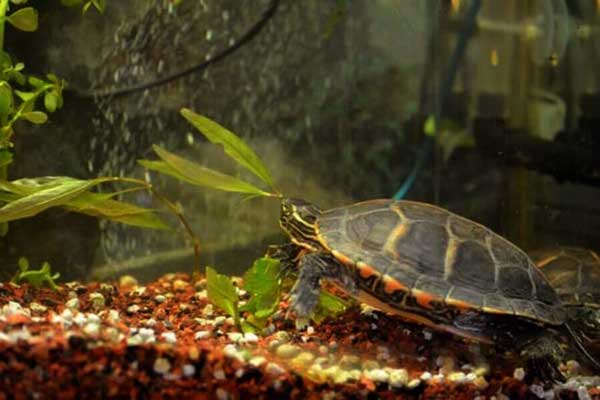
In addition to that, make sure you offer them a healthy, balanced diet to further increase their chances of hitting their life expectancy.
If at some point you feel can’t take care of your painted turtle anymore, get it a new home.
FAQs
The general rule of thumb is to provide a minimum of 20 gallons of water per painted turtle and an additional 10 gallons for every extra turtle in your turtle tank. This is the minimum amount, and getting more is even better to ensure your pet turtles freely swim around.
The water in an adult painted turtle tank should fall between 70 and 76°F while a young one will require slightly warmer temperatures between 78 and 80°F. The basking platform temperature for painted turtles should be around 88 to 94°F.
Painted turtles are aquatic and will spend most of their lives in water. They prefer eating, swimming, and sleeping in water.
Final Verdict
That’s everything you need to know about coming up with a basic painted turtle tank setup. Follow the step-by-step guide plus helpful tips above and you’ll be able to set up an ideal habitat for your painted turtle in no time. Remember that the goal is to create a living space that mirrors the natural/wild habitat of the painted turtle.
The most essential parts you need for painted turtle habitat include a spacious enclosure, basking platform, UV light, water filter, and a strong water heater. You may also consider adding accessories such as substrate, hiding spots, aquatic plants, etc. But these are 100% optional and only help make your turtle habitat more appealing.


